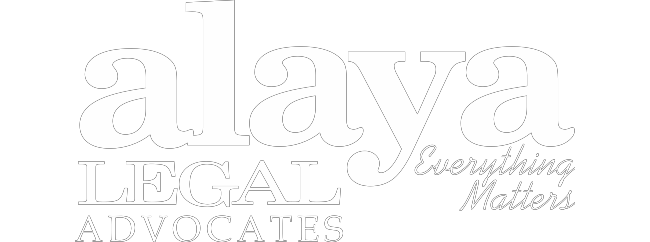Designed by Freepik
|
Reference Date | Version |
August 20, 2025 | 1.0 |
|
Keywords |
Civil liability, Nuclear incidents, Nuclear energy regulation, Reforms in Nuclear Energy, Atomic Energy Regulatory Board (AERB) |
|
Legislation(s)/Policies |
|
|
Jurisdiction |
India |
The Civil Liability for Nuclear Damage framework is a significant step in India’s evolving nuclear energy governance. The framework aims to strike a balance between the growth of nuclear power as a clean energy source and the need to ensure accountability and compensation in the event of a nuclear incident.
As India advances its nuclear energy programme, the legal and regulatory complexities surrounding nuclear liability demand a multidisciplinary approach. Aspects related to operator liability, the right of recourse and compliance with compensation mechanisms require guidance from expert legal advisors.
- Introduction
Nuclear energy is a source of low-carbon energy and will play a critical role in addressing the surging demand for electricity in India, contributing to sustainable development. By 2030, nuclear energy capacity in India will be required mainly to ensure reliable base-load supply, thereby complementing intermittent renewables and reducing over-dependence on coal. Nuclear energy is generally not deployed for peak demand in the Indian grid,and its policy significance lies in diversifying the energy mix, providing long-term price stability under Section 86 of the Electricity Act, 2003, and advancing India’s commitments under the Paris Agreement and Net Zero 2070 roadmap.
As of January 30, 2025, India has a nuclear capacity of 8.18 GW, with a commitment to achieve 100 GW by 2047, positioning nuclear energy as a major pillar in India’s energy mix.i Meeting this ambitious goal will require strategic policy interventions and infrastructural investments to address key challenges, including safety assurances, risk allocation, and attendant liability concerns.
The Civil Liability for Nuclear Damage Act, 2010 (CLND Act) was enacted to establish a domestic liability framework for nuclear damage. India signed the Convention on Supplementary Compensation for Nuclear Damage (CSC) on October 29, 2010, and subsequently ratified it on February 4, 2016, with the CLND Act forming the domestic legal basis for its adherence.
Liability for nuclear damage must be assessed against technological realities and the risks of nuclear energy generation. Chernobyl (1986) and Fukushima (2011), both major nuclear incidents rated INES Level 7, demonstrate how design flaws or loss of cooling can cause large-scale radiological releases with long-term health and environmental impacts.ii Radiation exposure, even at low levels, is linked to cancer and genetic disorders, underscoring the need for stringent control of sources and robust radioactive-waste management. Radioactive waste, i.e., radioactive material produces or made radioactive by exposure, during the utilisation of the nuclear fuel, must therefore be managed, transported, and disposed of strictly per national regulation and international best practice.
India has already witnessed, in the aftermath of the Bhopal Gas Tragedy of December 1984, widely attributed to systemic negligence and inadequate accountability, the devastating consequences of an industrial disaster on people, livelihoods, and the environment.iii This experience influenced India’s nuclear liability framework. The CLND Act, 2010 incorporates supplier liability so that, unlike in Bhopal, victims are not left uncompensated, and corporations abroad cannot evade responsibility.
This article examines the regulatory framework under the CLND Act to identify whether there is a case for legal or policy reform to support India’s growing nuclear energy ambitions.
- The Civil Liability for Nuclear Damage Act, 2010 (CLND Act)
After remaining relatively dormant for years, the CLND Act has resurfaced because India’s nuclear expansion is moving from policy to project stage. With foreign suppliers re-engaging on large projects (e.g., Jaitapur, Kovvada)iv, the CLND Act’s unique supplier-liability provisions, shaped by the Bhopal Gas Tragedy experience, are again being tested against the commercial realities of nuclear commerce and the geopolitics of clean energy transition.
The CLND Act establishes a structured framework for civil liability and prompt compensation through a no-fault and strict liability regime that channels liability to the operator, subject to limits and backed by government support and mandatory financial security/insurance.
- Key features of the CLND Act
- No-fault liability and prompt compensation to victims;
- Exclusive jurisdiction of the Claims Commissioner/Commission for nuclear-damage claims;
- Channelling of liability to the operator;
- Monetary limits on operator liability;
- Residual liability of the Central Government beyond the operator’s cap (up to an overall maximum);
- Mandatory insurance/financial security cover by operators.
This raises some key concerns such as whether the liability remains no-fault and limited to operators; the compatibility of India’s framework with global conventions like the CSC; and constitutional concerns (Articles 14 and 21)v on right to life, arbitrariness or inadequacy of compensation structures.
- Summary of Key Definitions
- “Nuclear damage” means loss of life/personal injury; loss of or damage to property; economic loss, costs of environmental reinstatement (where impairment is significant), loss of income from impacted environmental use/enjoyment, costs of preventive measures and consequent loss/damage, and certain other economic losses consistent with general civil law, where such loss arises from ionizing radiation emitted by a source in a nuclear installation or emitted from nuclear fuel/radioactive products/waste or nuclear material connected with a nuclear installation.
- “Nuclear fuel”: material capable of producing energy by a self-sustaining chain fission process.
- “Nuclear incident”: any occurrence/series of occurrences with the same origin causing nuclear damage.
- “Nuclear installation”: includes reactors (other than propulsion), facilities using nuclear fuel to produce nuclear material or using/processing nuclear material (including reprocessing), and facilities where nuclear material is stored (other than incidental to carriage). Co-located installations of one operator at the same site count as a single installation.
- “Nuclear material”: includes nuclear fuel (other than natural/depleted uranium) capable of process of nuclear fission outside a reactor, and radioactive products or waste.
- “Operator”: in relation to a nuclear installation, means the Central Government, an authority/corporation established by it, or a Government company licensed under the Atomic Energy Act, 1962 to operate the installation.
- “Radioactive products or waste”: radioactive material produced in, or made radioactive by exposure during, production/utilisation of nuclear fuel and excludes finished radioisotopes for end-use (scientific/ medical/ agricultural/ commercial).
- Atomic Energy Regulatory Board (AERB)
Under Section 3 of the CLND Act, the AERB (constituted under the Atomic Energy Act, 1962) must notify a “nuclear incident” within 15 days of occurrence unless the AERB is satisfied that the gravity of threat/risk is insignificant. While the CLND Act grants expert discretion, Courts have upheld AERB’s technical autonomy. In Yash Thomas Mannully v. Union of India (Kerala HC, W.P.(C) No. 27960/2011 (S)), the Court upheld the validity of Section 3, noting that the AERB functions based on internationally accepted standards/codes and can adopt appropriate methodologies for determining nuclear damage.
- Concept of Liability
- Strict and No-Fault Liability of the Operator
Under Section 4(1) of the CLND Act, the operator is liable to persons suffering nuclear damage caused by a nuclear incident in that installation or involving nuclear material from it. Liability is strict and no-fault. Section 8(1) of CLND Act requires operators, before commencing operations, to obtain insurance/financial security (or a combination) covering their liability.
- Right of Recourse (Section 17).
Although liability is channelled to the operator, the operator has a right of recourse after paying compensation (Section 6) in the following cases:
- Contractual: where expressly provided in a written contract (Section 17(a));
- Supplier fault: where the incident results from an act of the supplier or employee, including patent/latent defects in equipment/material or sub-standard services (Section 17(b));
- Intentional acts: where the incident results from an act/omission intended to cause nuclear damage (Section 17(c)).
However, foreign suppliers have viewed the provision of Section 17 (b) of the CLND Act as a commercial impedimentvi, raising the broader policy question: how to balance bankable risk-allocation for suppliers with credible victim protection and safety incentives.
- Limits of Liability
- Operator’s Liability Limit (Section 6(2)) for nuclear damage caused by a nuclear incident.
- ₹1,500 crores– nuclear reactors with thermal power ≥ 10 MW;
- ₹300 crores– spent-fuel reprocessing plants;
- ₹100 crores– research reactors (<10 MW), fuel-cycle facilities other than reprocessing, and transportation of nuclear materials.
- Operator’s Right of Recourse (Section 17 read with Rule 24)
While the CLND Act itself does not set a separate numerical cap for contracts referred in section 17(a) of the CLND Act, Rule 24 of the Civil Liability for Nuclear Damage Rules, 2011 (CLND Rules, 2011) provides that a contract under Section 17(a) of the CLND Act shall include a right of recourse for not less than the extent of the operator’s liability subject to a maximum of the operator’s statutory liability or the contract value, whichever is lower.
- Government Liability (Sections 6(1) and 7).
The Central Government is liable to cover compensation exceeding the operator’s cap, subject to an overall maximum of 300 million SDRs (Section 6(1)). Where compensation exceeds this maximum, the Government may take additional measures where necessary (Section 7). This preserves government support while maintaining predictability for operators.
- Who May Apply for Compensation?
An application may be made by:
- a person sustaining injury;
- the owner of damaged property;
- the legal representatives of the deceased; or
- an authorised agent of such person/owner/representatives.
It is important to note that procedural streamlining, and outreach mechanisms are critical to ensure timely filing and inclusion of vulnerable populations.
- MEA FAQs (Version 2.0): Interpretive Guidance
The Ministry of External Affairs (MEA) has clarified several issues in FAQs (v2.0)vii concerning the CLND Act and CSC alignment:
- CSC Compliance.
The MEA states the CLND Act complies with the Annex to the CSC regarding channelling strict liability to the operator, limits on amount/time, insurance/financial security, and core definitions.
- Who is a “Supplier” (Rule 24, Explanation 1 of the CLND Rules).
The CLND Act does not define the term “supplier”. Rule 24 (Explanation 1) covers this definition as summarised below:
- a person who manufactures and supplies a system/equipment/component or builds a structure on functional specification;
- a person who provides build-to-print/detailed design to a vendor and is responsible to the operator for design and quality assurance;
- provides quality assurance or design services.
The MEA interprets this to mean the system designer/technology owner is the supplier, typically acting on behalf of sub-vendors and able to reflect this in the general conditions of contract.
- Right of Recourse against Sub-vendors.
As per the MEA, because the technology owner/system designer is the supplier, they can require sub-vendors to obtain insurance and address back-to-back liabilities, contractual structuring thus cascades risk down the supply chain.
- Section 17(b) v. CSC Annex Article 10 (Right of Recourse).
While Article 10 of the Annex to the CSC explicitly covers contractual recourse and intentional acts (akin to Sections 17(a) and 17(c)), Section 17(b) adds recourse for supplier fault (defects/sub-standard services). The MEA positions section 17(b) as consistent with product-liability concepts within national law, to be read with the contract’s product-liability clauses.
- Judicial Insights on Constitutional Validity
In Yash Thomas Mannully v. Union of India (Kerala High Court, W.P.(C) No. 27960/2011 (S)), petitioners challenged multiple provisions, including Section 4(2) (joint liability when multiple operators are involved), Section 5 (operator not liable in certain circumstances), Section 6 (limits of liability), and Section 38(1) (dissolution of Commission in certain cases), arguing violations of Articles 14 and 21 of the Constitution and inconsistency with the Supreme Court’s ruling in M.C. Mehta v. Union of India (1986).
Court’s Holding:
- On limits/joint liability: The statutory architecture reasonably allocates liability where multiple operators are involved, as it may not be possible to find out as to which operator is responsible. In this circumstance limits are specified to preventing an unerring operator from bearing the whole burden of compensation.
- On Section 5: The exclusions reflect a force-majeure clauses seen across statutes and are not per se unconstitutional.
- On Section 6 and Section 7 (liability of central government): Liability limits were held to be not arbitrary and based on certain index that can be modified by the Central government. Moreover, the Central government has undertaken liability under Section 7, clarifying that the Central government is responsible for compensation over and above the liability paid by the operator.
- On Section 38(1): The Commission’s functioning is subject to the decision of the Central government, as it is appointed in public interest and can be dissolved by virtue of the circumstances under Section 38 (1). The power is vested in Commission by statute, and its procedure is regulated by the statute, hence there is no doubt on the independence of the Commission.
The writ petition was dismissed, and the CLND Act was found not to suffer from infirmity/arbitrariness or violate Part III.
- Policy Rationale, Commercial Realities, and Reform Considerations
- Why the CLND framework matters now?
India’s capacity expansion plans, climate commitments, and energy-security strategy require scaling nuclear quickly while preserving public trust. As projects approach financial closure, the enforceability and bankability of recourse, insurance, and claims administration are critical. The Central government in the Union Budget 2025-26 has also shown its keen interest in increasing the nuclear energy capacity of India under the Nuclear Energy Mission for Viksit Bharat, calling for a change in the legal framework governing nuclear energy.viii
- Balancing victim protection with investments.
The no-fault liability model protects victims by ensuring a financially identifiable defendant (the operator) with mandatory insurance and government support. Section 17(b) of the CLND Act and Rule 24 of the CLND Rules seek to preserve safety incentives for suppliers by enabling recourse where defect in quality is causally linked. The commercial challenge is to calibrate contract terms, quality assurance and product-liability allocations, and insurance so that supplier risk is known, insurable, and priced and not indeterminate.
- Alignment with CSC and international practice.
The MEA’s position is that India’s regime aligns with CSC core norms incorporating a national law that allows product-liability based recourse from suppliers. Practical convergence can be achieved through:
- Clear standards for invoking 17(b), that is, on defect attribution, forensic protocols, technical assessments etc., should be incorporated in contracts
- Structured quality assurance/inspection and acceptance milestones can be incorporated in contracts
- Layered insurance should be developed (operator pool, supplier product-liability and professional indemnity);
- Dispute resolution design that is swift and technically informed.
- Insurance architecture.
Supplier comfort improves with model policy wordings, endorsements covering defect risk linked to nuclear incidents, and clarity on claims cooperation and legal cost handling. Standardised clauses reduce friction and support financing.
- Administrative efficacy and access to remedy.
For victims, speed and certainty matter. Strengthening the Claims Commissioner/ Commission via procedural rules (timelines, legal aid, medical/epidemiological panels, interim relief) will enhance legitimacy.
- Suggested policy/legal refinements
- Codify guidance on invoking Section 17(b) (defect standards, evidence thresholds, expert review) to improve predictability and increasing supplier confidence, without diluting safety incentives.
- Model contracting toolkit (government endorsed) for operator-supplier arrangements, including quality assurance plans, acceptance testing, warranty regimes, step-in rights, and insurance matrices aligned with Rule 24 of CLND Rules.
- Periodic review of monetary caps to reflect inflation, population density near sites, and evolving risk models.
- Conclusion
India’s nuclear expansion requires a liability regime that is credible for citizens and bankable for investors. The CLND Act delivers a core architecture involving no-fault liability channelling, operator insurance, and government support, while preserving a narrow but meaningful operator recourse against supplier fault consistent with national product-liability principles. Commercial tension can be mitigated, not by abandoning victim protection, but by sharpening contract and insurance tooling, clarifying defect-causation standards, and standardising risk-allocation.
As India targets 100 GW of nuclear energy by 2047, legal certainty, insurance capacity, and administrative readiness will determine whether nuclear can reliably complement renewables, reduce coal dependence, and meet climate goals, without compromising safety or justice for victims. The pathway forward is evolution, not overhaul. Targeted clarifications, model documentation, and insurance deepening can unlock investment while staying true to the lessons in the aftermath of industrial disasters and the imperatives of accountability to the public.
Founded in 2003 by Divjyot Singh and Suniti Kaur, Alaya Legal takes pride in its boutique practice, encompassing Litigation & Arbitration, Corporate and Commercial, Energy & Sustainability and Information Technology (IT) and Artificial Intelligence (AI). The firm offers tailored solutions to its clients to align with their growth objectives by leveraging their expertise and experience in these sectors.
If you are interested in related topics such as operator liability, the right of recourse, and compliance with compensation mechanisms, or similar energy law aspects, please reach out to our legal firm in Gurgaon, which has expertise in transactions, documentation, and compliance with environmental laws and regulations. Our team of environmental lawyers would be happy to understand your specific requirements and work with your team to address various issues related to these matters. Please feel free to contact us for more information on how our legal firm in NCR can help.



























